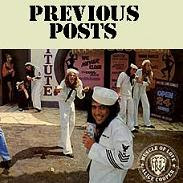Tanker Is The 75th Ship To Leave The 'Ghost Fleet'
Government officials celebrated as the 75th ship departed from the James River Reserve Fleet, saying the event illustrates the quickening pace of the disposal of obsolete Navy vessels that pose an environmental risk as they sit idle in the river. The milestone also raises the question: Will the "ghost fleet" disappear? Since 2001, the fleet has been reduced to about 30 vessels, and the government now makes millions of dollars selling the ships to scrap-metal dealers. In the next two years, the number of ships in the fleet could fall to fewer than 10, all of them retention ships that can be used if needed, said Sean T. Connaughton, head of the U.S. Maritime Administration. Despite the reductions, the fleet is here to stay, Connaughton said, because the government always needs reserve ships. "It's a living fleet, so as vessels move out, new vessels move in," he said. "The ships that will be here will be ships that can very quickly be put back into service in case there is a natural or man-made disaster," he said. The ship that departed Wednesday, the Truckee, is a 9,000-ton oiler that fueled 152 ships during the 1962 Cuban missile crisis. The tanker has been out of service since 1994, and for the past nine years it has been part of the ghost fleet, located off Fort Eustis in Newport News. Bay Bridge Enterprises purchased the tanker for $1.2 million and plans to melt the ship into 2-by-5-foot chunks of steel, a process that takes about a year.
USS Truckee (AO-147) The Chesapeake-based company will sell the scrap metal in hopes of turning a profit. "This has a positive local impact," said U.S. Rep. Rob Wittman, R-1st District, who boarded a small service vessel Wednesday to get an up-close look as the Truckee departed. "Right now we're at an advantage because the price of scrap steel is high, so that's going to accelerate the effort to remove these ships," he said. "Obviously we want to do as many as we can when there's a net gain." Five tugboats pulled the half-century-old ship toward a Bay Bridge Enterprises facility about 26 miles down the river. Rebecca Robinson, a vice president at Bay Bridge, said the company paid $80,000 to tow the ship that distance, and about half of the money covered fuel costs. The company soon will begin stripping the ship of waste products such as fiberglass, asbestos, mercury and electrical transformers. Fear of these hazardous materials leaking into the river is what prompted the government to start disposing of the aging vessels in 2001. The government used to pay private companies to dispose of the ships, but that's changed as the value of the ships has increased with the price of scrap metal. Companies now bid for the chance to take and dismantle the obsolete vessels. "Our staff is working diligently to go out and sell these ships," Connaughton said. "Another five more should be gone by the end of the year."





















<< Home